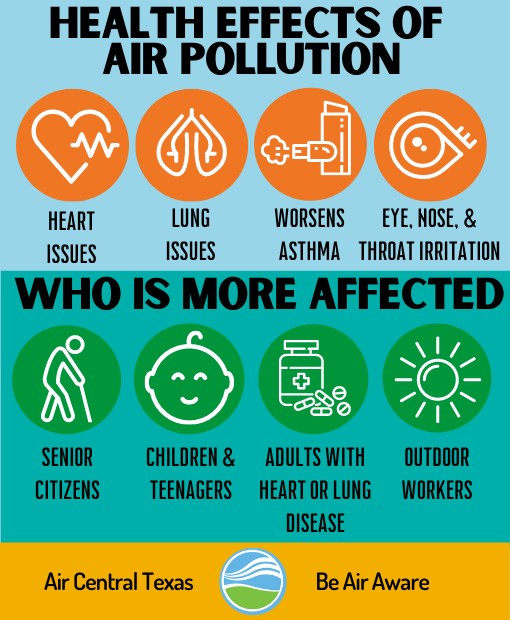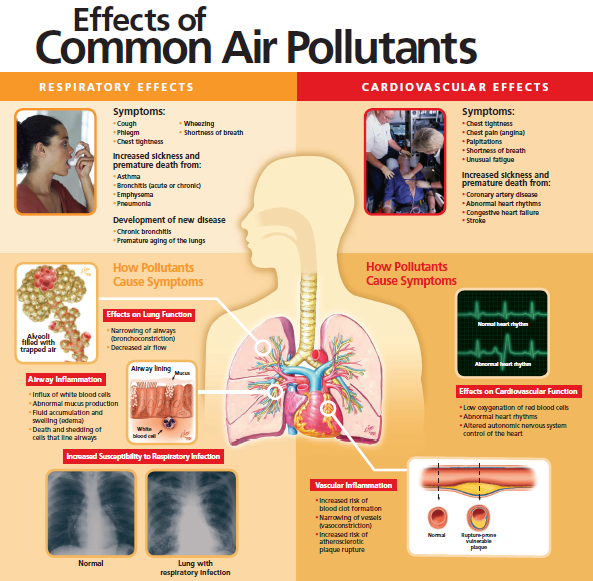Who is at Risk?

Sensitive Groups for High Ozone or PM
While as recently as 2013, ozone levels in the region were high enough to be considered "unhealthy" for the general public, more commonly, the region's ozone levels are high enough to be considered by the U.S. Environmental Protection Agency (EPA) to be "unhealthy for sensitive groups." PM pollution can reach "unhealthy for sensitive groups" at times in Central Texas.
These sensitive groups include:
- Children (under 18), including teenagers, because their lungs are still developing and they breathe more air per pound of body weight than adults
- Older adults (65+)
- Other adults (18-64) with lung disease, such as asthma, or cardiovascular disease
- People who are active outdoors, including outdoor workers

Health Effects from Ozone and PM
Millions of people live in areas where air pollution can cause serious health problems. Local air quality can affect our daily lives. Like the weather, it can change from day to day. EPA developed the Air Quality Index, or AQI, to make information available about the health effects of the five most common air pollutants, and how to avoid those effects. EPA
Help Reduce Pollution Exposure on High Days
You can use the real-time Air Quality Index (AQI) and the AQI forecast in order to plan outdoor activities, especially if you are in a sensitive groups or take care of someone else in a sensitive group.
- Choose a less-strenuous activity
- Take more breaks during outdoor activity
- Reschedule activities to the morning or to another day
- Move your activity inside
- Limit your activity along roads
You can "Be Air Aware" by checking the real-time AQI and viewing the AQI forecast for the week.
The current AQI and the pollutant of concern is shown in the widget below.
Stats on Sensitive Groups in Central Texas
While the term "sensitive groups" may sound as if air pollution only affects a small number of people, the groups who are vulnerable to high air pollution made up more than 1 out of every 3 residents of Central Texas.
- At least 766,014 residents are considered "sensitive" to high pollution levels in Central Texas
- 479,353 children
- 196,764 older adults
- 89,897 other adults 18-64 with asthma (5.5-8.3%, depending on the age group)
*Data sources: